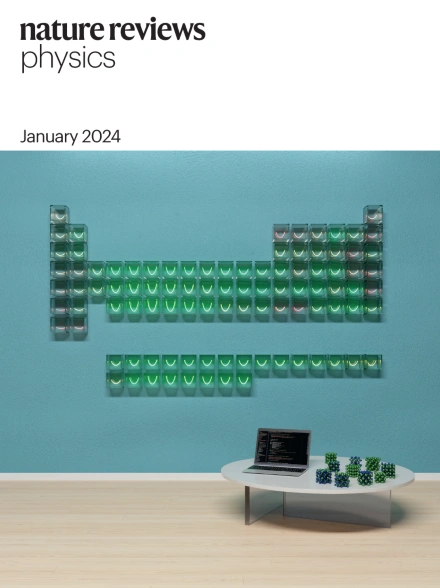Platforms for the realization and characterization of Tomonaga–Luttinger liquids
IF 39.5
1区 物理与天体物理
Q1 PHYSICS, APPLIED
引用次数: 0
Abstract
The concept of a Tomonaga–Luttinger liquid (TLL) has been established as a fundamental theory for the understanding of 1D quantum systems. Originally formulated as a replacement for the Fermi liquid theory of Landau, which accurately predicts the behaviour of most 3D metals but fails dramatically in 1D, the TLL description applies to an even broader class of 1D systems, including bosons and anyons. After a certain number of theoretical breakthroughs, its descriptive power has now been confirmed experimentally in different experimental platforms. They extend from organic conductors, carbon nanotubes, quantum wires, topological edge states of quantum spin Hall insulators to cold atoms, Josephson junctions, Bose liquids confined within 1D nanocapillaries, and spin chains. In the ground state of such systems, quantum fluctuations become correlated on all length scales, but, counter-intuitively, no long-range order exists. This Review will illustrate the validity of conformal field theory for describing real-world systems, establishing the boundaries for its application, and discuss how the quantum-critical TLL state governs the properties of many-body systems in 1D. The Tomonaga–Luttinger liquid framework can be used to describe 1D quantum systems, spanning fermions, bosons and anyons. In this Review, we discuss the various platforms that can host TLL states, including Josephson junctions, cold atoms and topological materials, and discuss the advances TLL theory can provide in quantum criticality, nonequilibrium dynamics and condensed-matter physics exploration.

Tomonaga-Luttinger液体的实现和表征平台
Tomonaga-Luttinger液体(TLL)的概念已被确立为理解一维量子系统的基本理论。朗道的费米液体理论准确地预测了大多数三维金属的行为,但在一维中却明显失败,而TLL描述最初是作为费米液体理论的替代品而制定的,它适用于更广泛的一维系统,包括玻色子和任意子。经过一定的理论突破,其描述能力现已在不同的实验平台上得到实验证实。它们从有机导体、碳纳米管、量子线、量子自旋霍尔绝缘体的拓扑边缘态延伸到冷原子、约瑟夫森结、局限在一维纳米毛细管中的玻色液体和自旋链。在这种系统的基态中,量子涨落在所有长度尺度上都是相关的,但是,与直觉相反,不存在长程顺序。本综述将说明共形场论在描述现实世界系统中的有效性,为其应用建立边界,并讨论量子临界TLL状态如何控制一维多体系统的性质。Tomonaga-Luttinger液体框架可以用来描述一维量子系统,包括费米子、玻色子和任意子。在这篇综述中,我们讨论了可以承载TLL态的各种平台,包括约瑟夫森结、冷原子和拓扑材料,并讨论了TLL理论在量子临界性、非平衡动力学和凝聚态物理探索方面的进展。
本文章由计算机程序翻译,如有差异,请以英文原文为准。
求助全文
约1分钟内获得全文
求助全文
来源期刊

Nature Reviews Physics
Multiple-
CiteScore
47.80
自引率
0.50%
发文量
122
期刊介绍:
Nature Reviews Physics is an online-only reviews journal, part of the Nature Reviews portfolio of journals. It publishes high-quality technical reference, review, and commentary articles in all areas of fundamental and applied physics. The journal offers a range of content types, including Reviews, Perspectives, Roadmaps, Technical Reviews, Expert Recommendations, Comments, Editorials, Research Highlights, Features, and News & Views, which cover significant advances in the field and topical issues. Nature Reviews Physics is published monthly from January 2019 and does not have external, academic editors. Instead, all editorial decisions are made by a dedicated team of full-time professional editors.
 求助内容:
求助内容: 应助结果提醒方式:
应助结果提醒方式:


